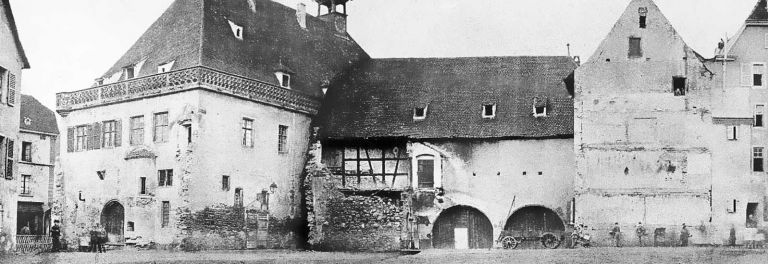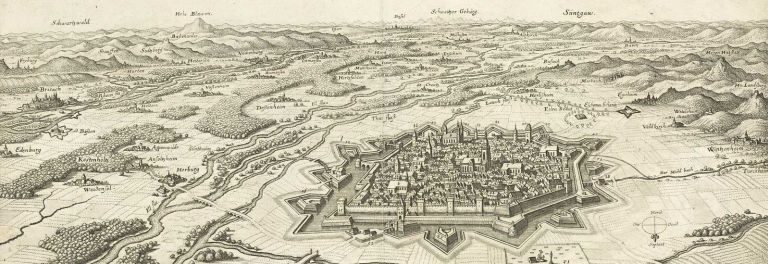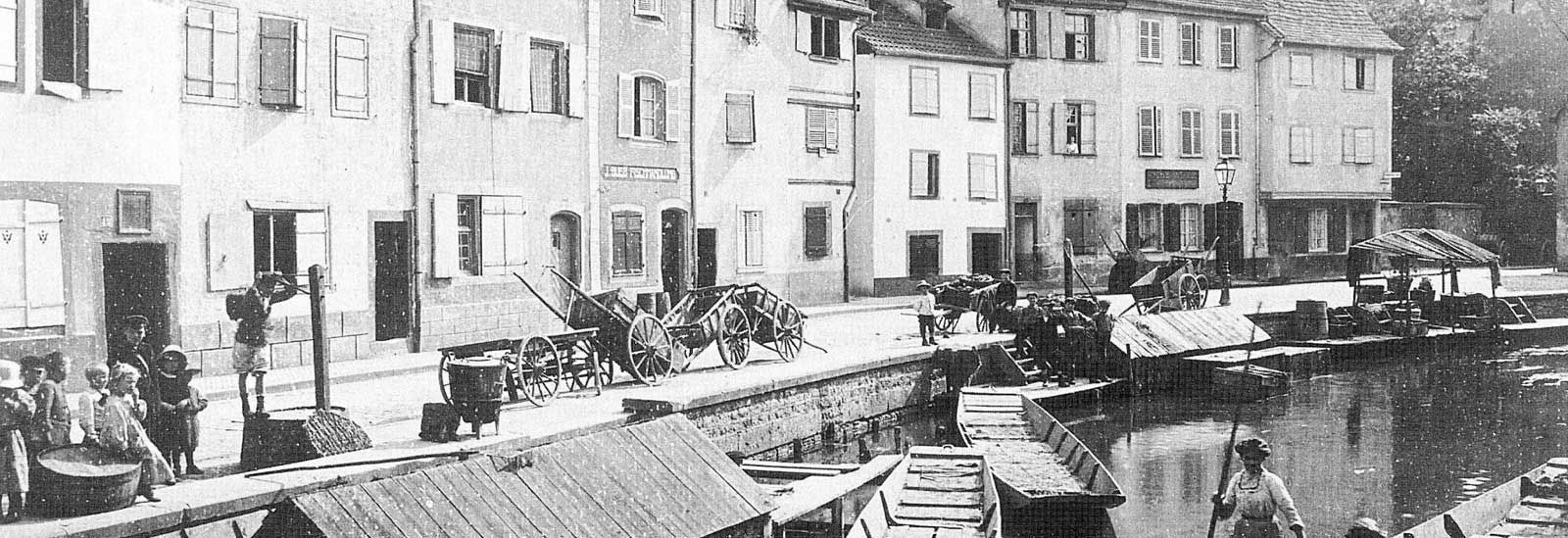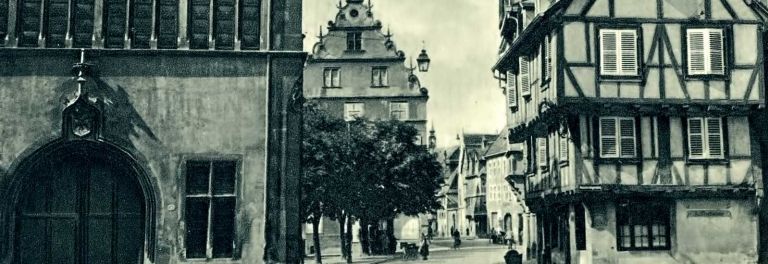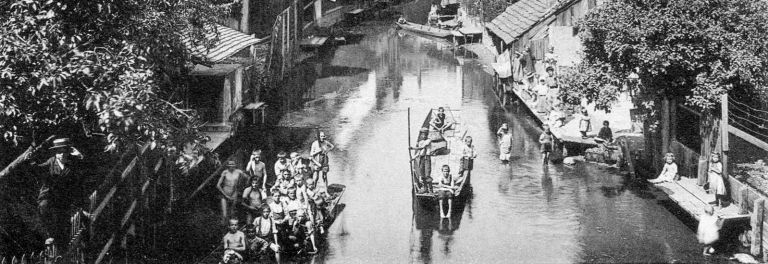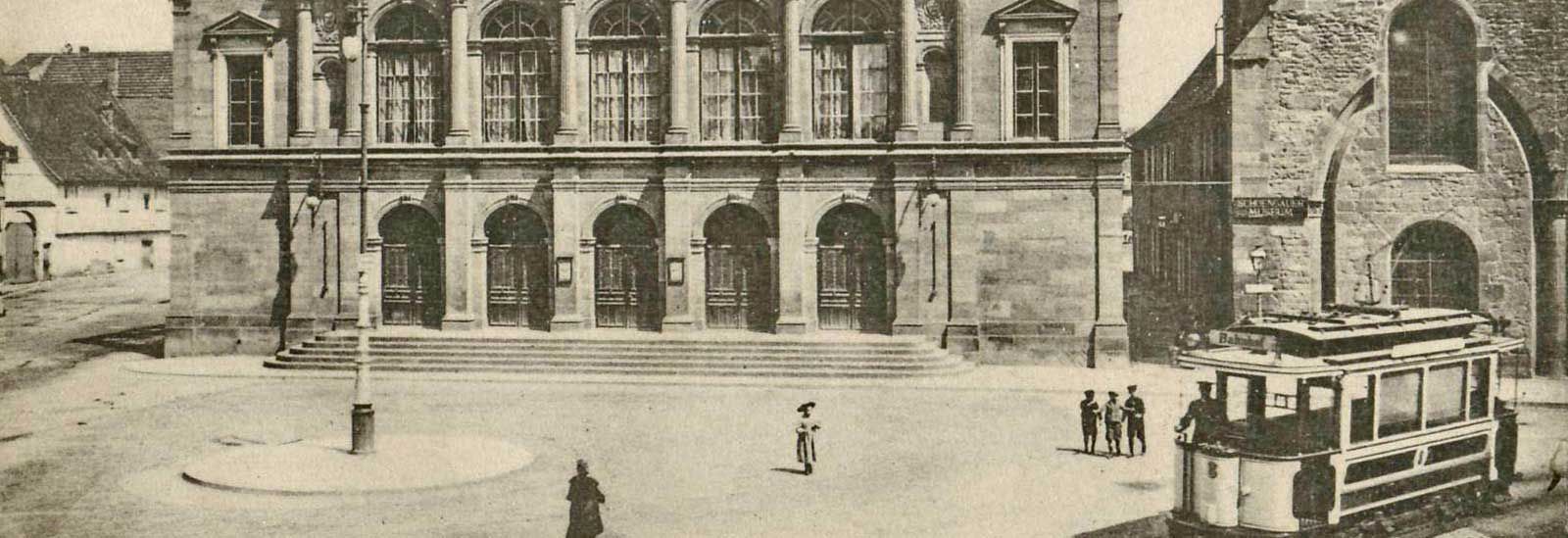Colmar History
Colmar, from the Roman Columbarium, for mentioned for the first time in 823, in an act of donation by EmperorLouis le Pieux, son of Charlemagne. In 9th century Colmar’s architecture was in the form of huge wooden buildings, barns, stables, a press, an inner courtyard and dovecote.
The city continued to develop in the MiddleAges until it became an Imperial City in the 13th century. At that time religious orders established themselves in Colmar. Franciscans, Dominicans and Augustinians built their places of worship and dwellings, with numerouschurches and monastic buildings still standing today in the historical centre.
In 1354, Colmar took part in theestablishment of the Decapole, federation of ten cities of Alsace united to defend their privileges and Imperial Citystatus. The Koïfhus building finished in 1480 accommodated the meetings of the Decapole political members until 1678, when Colmar became a “Royal City of France” after the Revolution. The Thirty Years’ War (1618-1648) caused great upheavals that ruined the city, and in 1635 Colmar was placed under the protection of the King ofFrance without going as far as abandoning its status of Imperial City, its privileges, rights and customs.
In 15th and 16th centuries the city were in its golden age, when it found wealth thanks to its merchants, agriculture andabove all wine making. Superb buildings and other sumptuous abodes were built. In 1698, Colmar became thejudicial capital of Alsace province with the establishment of the Sovereign Council of Alsace. The Palace of theCouncil was finished in 1771, and today it houses the Court of First Instance. Voltaire, who stayed in Colmar forthirteen months between 1753 and 1754, described the city as “a city half-German and half-French, and wholly Iroquoian”.
2 February 1945 is a key date in the city’s history, the most important of the 20th century. For thepeople of Colmar, it marks the end of the Second World War with the battle of the “Colmar Pocket”, the last onFrench soil and which incurred extremely heavy losses.
The History of Colmar in 20 key dates
823 The Carolingian domain, “Columbarium” was first mentioned in a charter of the emperor, Louis the Pious
1226 Colmar appears in a text as a town in its own right (civitatis).
1278 Rodolphe of Habsburg grants the town franchise under the Franchise Charter.
1354 Colmar participates in the creation of the Décapole, federation of the 10 imperial towns of Alsace.
1360 Colmar is endowed with a new constitution by the emperor, Charles IV, which was a huge victory of the bourgeoisie over the nobility.
1480 Construction of the current building, the Old Customs House or Koïfhus.
1536 The Peasants War causes turmoil in Colmar, and the Reform’s first proponents appear.
1575 Late introduction of the Reform in Colmar.
1635 The Rueil Treaty places Colmar under the King of France’s protectorate
1648 The Munster Treaty in Westphalia: French people leave Colmar, and the Empire’s imminence is confirmed.
1679 The Nimegue Treaty: Colmar becomes a royal town of France.
1698 The Sovereign Council of Alsace is established in Colmar, which becomes the judicial capital of the whole province.
1753 Voltaire spends 13 months in Colmar.
1773 Establishment of the Military Academy of Colmar by the poet and teacher, Pfeffel.
1790 Colmar becomes the county seat of the Upper Rhine département.
1800 Colmar becomes the seat of the prefecture and of the Court of Appeals.
1854 The cholera epidemic claims many lives.
1871 Under the Treaty of Frankfurt, Colmar, like all of Alsace, is annexed to the German Empire.
1918 On November 18th, the jubilant entry of the French troops in Colmar.
1945 On February 2nd, the town is liberated after the harsh battles of the “Pocket of Colmar.”
Chronology extracted from ”Colmar, Mémoire d’une ville” by Gabriel BRAEUNER (Colmar, Jérome Do Bentzinger Editeur, 2000).
Legends and stories
The beast of Colmar
The informed visitor of Colmar knows that it is best to steer clear of the rue des Clefs at certain hours of the night. The street, by day a bustling shopping area (the Town Hall is also in the same street) at nightfall becomes the haunt of a terrifying calf, the famous Colmar Nachtkalb.
No one knows exactly how long he has been playing his evil tricks, lowing mightily from his hiding place and sometimes charging poor animals that have wandered away from the safety of their homes or tourists staggering out of the local wistubs, their bellies full of the local wine.
The club of Hercules
Hercules, the half-God, on his way back from the garden of Hesperides, found himself in the region between the Vosges and the Rhine, that would later become Alsace. It was late, hot and he was thirsty. He decided to halt and drank local wine that was (already) good.
Entering an inn, he downed vast quantities of the local wine which was reputed even then and thereupon fell into a deep sleep, his head spinning. When he came to the next morning, his head was aching and he saw that his herd had run off during the night. Rushing off in hot pursuit, he left his club behind. The locals, with their love of all things tidy, eventually placed the forgotten club in the town´s coat of arms. This probably explains why, for as long as can be remembered, the inhabitants of Colmar have been known as the Kolbnarren - the mad clubmen.
The phantom of the milkwoman
If you lie in wait patiently, on certain nights in the rue des Augustins, just next to the prison of Colmar, you can espy the pale, furtive outline of a woman clothed all in white, the phantom of the milkwoman.
The poor woman, many, many years ago, was caught adding water to her milk and God, from a sense of justice, obliged her to return every night, in her penitent´s garb, to throw the offending liquid into the well of the Augustinians.
The mysterious horse with no body
Seldom seen, but even more terrifying, on certain days of the year around midnight, there can be heard whinnying and the clattering of hooves on some stairways, heralding the fleeting glimpse of the bodiless, emaciated head of a galloping nag.
 Visit
Visit


